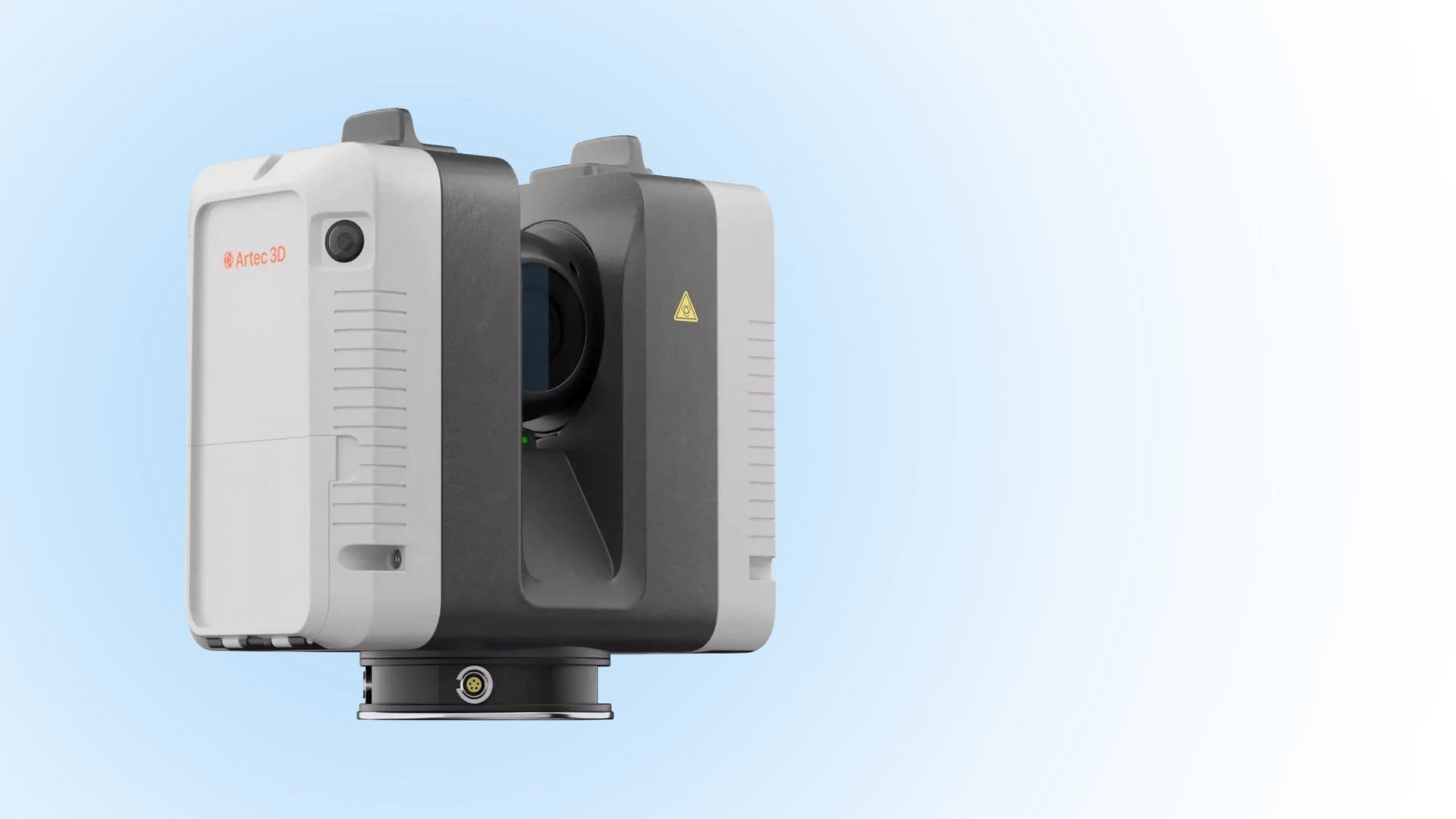
Long-Distance 3D Scanning for Infrastructure
Huge infrastructure projects present unique challenges that can only be addressed with advanced solutions like long-range 3D scanners. Whether it’s
Handheld 3D scanners offer many benefits to businesses and professionals, but they also have certain limitations that you should be aware of before incorporating them into your workflow. Some of the obvious pros of handheld 3D scanners include flexibility, portability, simplicity, convenience, and cost efficiency, while their setbacks include limited accuracy in some instances, high initial cost, light sensitivity, and size limitations.
Understanding these facts about handheld 3D scanners will help you make informed decisions about integrating them into your business or profession. We’ll discuss these pros and cons to make your work easier when choosing the right handheld scanner.
Handheld 3D scanners can scan a large, immovable object by allowing you to move around the object to get multiple views. This flexibility enables you to capture accurate data of hard-to-reach parts of the object.
They’re suitable for numerous applications, including manufacturing, archaeology, healthcare, construction and engineering, and astrology. You can create 3D models of components used in manufacturing. Their adaptability makes them invaluable for businesses and professionals in these industries.
Handheld 3D scanners ensure portability through their compact size and lightweight design. Some of them are small enough to fit into your pocket, which can come in handy when you need to scan objects in remote locations or do quick scanning on the go.
These scanners can easily scan objects in tight spaces or scan hidden parts of a large, fixed object that are difficult to scan with stationary scanners. Archaeologists find handheld scanners quite invaluable because they allow them to capture rare findings during excavation instead of breaking them into small pieces and hauling them to laboratories for 3D scanning.
Handheld scanners are cost-effective due to their portability, simple designs, and versatility, resulting in inexpensive installation, speedy turnaround times, and lower labor costs. Installing a traditional stationary 3D scanner requires special expertise, extra space, and equipment to keep it steady. The additional elements will raise the overall cost of installing the scanner.
Still, handheld scanners don’t require special installation skills and equipment. You just plug them into the power outlet and press the power button. They come with simple user manuals with instructions on how to perform the initial setup and do professional scanning.
With a handheld 3D scanner, you won’t need to waste time turning large objects around because you can move around the object and capture as many views as possible. The scanner also uses advanced scanning technologies like laser triangulation and structured light to capture enough data points quickly.
Although handheld 3D scanners are accurate, their measurements are likely to be distorted as you move them around the object, especially when you’re scanning small objects with complex surfaces that need scanning.
Their degree of precision tends to be slightly lower than that of stationary 3D scanners because the former are likely to lose calibration faster than the latter. Your hand movements, reflective surfaces, and complicated geometries can also cause inaccuracies when using a handheld scanner.
Scanning an object with a reflective surface makes it difficult for a handheld scanner to capture accurate data. 3D scanners, especially those based on structured light, are likely to develop light sensitivity issues.
Light sensitivity affects the scanner’s performance, especially when working outdoors or in spaces with excessive lighting. So, make sure the object doesn’t have a reflective or transparent surface and the room isn’t brightly lit.
Size limitation is a common issue with handheld 3D scanners, mainly because of their static field of view, which determines their single scanning range. They can’t scan objects outside the set size range.
Scanning outside that range becomes challenging and prone to inaccuracies. Even if you scan large objects from multiple angles, the scanner’s focus length and fixed field of view still apply and may affect the accuracy of individual frames.
Handheld 3D scanners can be expensive, especially high-end ones with cutting-edge features and functionalities. The software for laser triangulation or structured light scanning can be costly.
Handheld 3D scanners are cutting-edge tools that have transformed the world of 3D scanning with their versatility, portability, simplicity, and ease of use. If you’re looking for a reliable handheld 3D scanner, check out Digitize Designs’ product line today!
3D Scanning & Metrology News, Press, Insights, Trends, Case Studies, and more.

Huge infrastructure projects present unique challenges that can only be addressed with advanced solutions like long-range 3D scanners. Whether it’s

Different long-range scanner brands offer varying features and capabilities; hence the need to understand the most crucial aspects of long-range

The key difference between long-range and short-range scanners is the maximum distance at which they can capture data. Ordinarily, long-range

The key elements to consider in long-range 3D scanners include accuracy, scan speed, resolution, scanning mechanism, and ease of use.
Secure SSL Encrypted Connection
Two-factor Authentication
© Copyright 2024 – Digitize Designs, LLC – Privacy Policy – Website by Luminos Agency